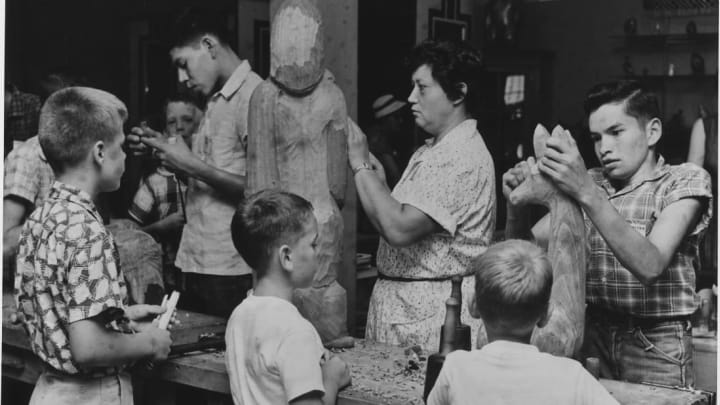Amanda Crowe created remarkable works of art with just a mallet and chisel, transforming blocks of wood into bears, raccoons, deer, moose, and owls. The late Eastern Band Cherokee Indian woodcarver, who died in 2004, is being celebrated in today’s Google Doodle.
A video featuring images of some of Crowe’s works was released in recognition of Native American Heritage Month. The musical accompaniment was composed by her nephew, William “Bill” H. Crowe, Jr., and the video highlights some of Crowe’s best-known quotes.
“I carve because I love to do it,” Crowe once said. “The movement of the grains—they almost seem alive under your hands—and the beautiful tones and textures all add life to the figures you whittle.”
Crowe was born in the Qualla Boundary, North Carolina on July 16, 1928, and her uncle started teaching her how to carve wood when she was just four years old. She later commented that she was “barely old enough to handle a knife” when she first started learning, but she clearly had a knack for working with her hands.
After honing her craft throughout her childhood and teen years, she was offered a scholarship to the Art Institute of Chicago. There, she studied various media—including plaster, stone, and metal—but she always gravitated toward wood. Crowe went on to earn a master’s degree and spent some time in Mexico studying with Spanish sculptor José de Creeft.
When she finally returned home to the Qualla Boundary, she spent the next 40 years teaching art at Cherokee High School. According to Google, she is often credited with helping to restore interest in Cherokee carving—an ancestral tradition and a unique art form. Her carvings have carried her legacy around the world, having been displayed at museums in the U.S., England, Germany, and beyond.
